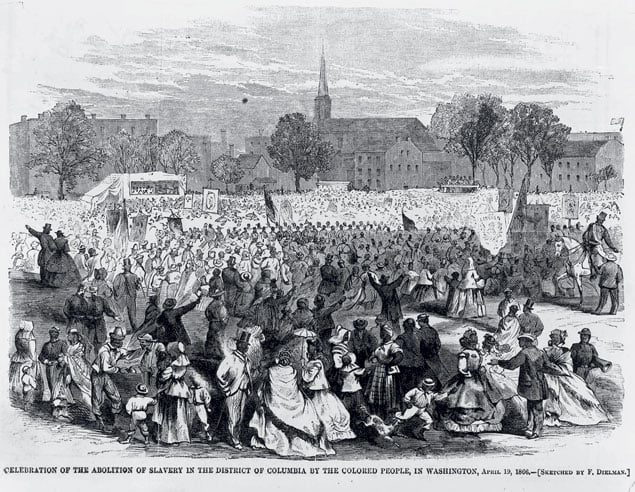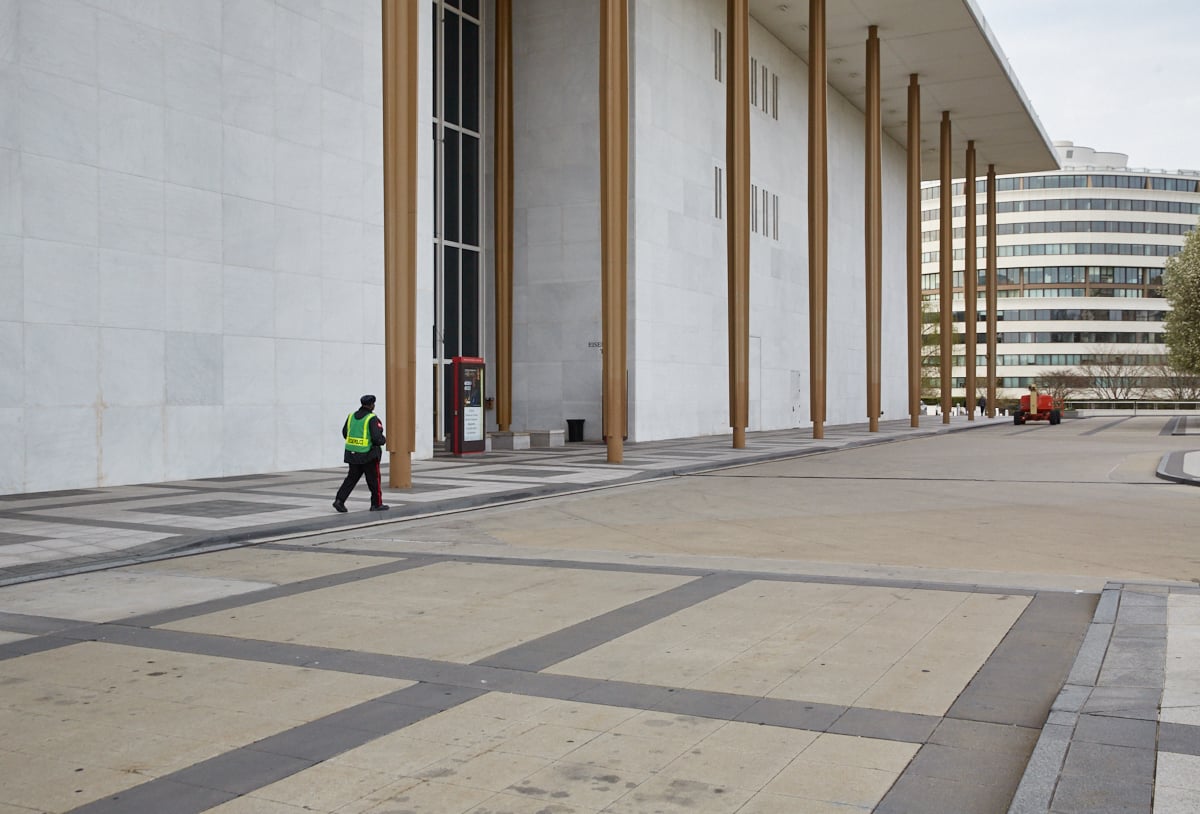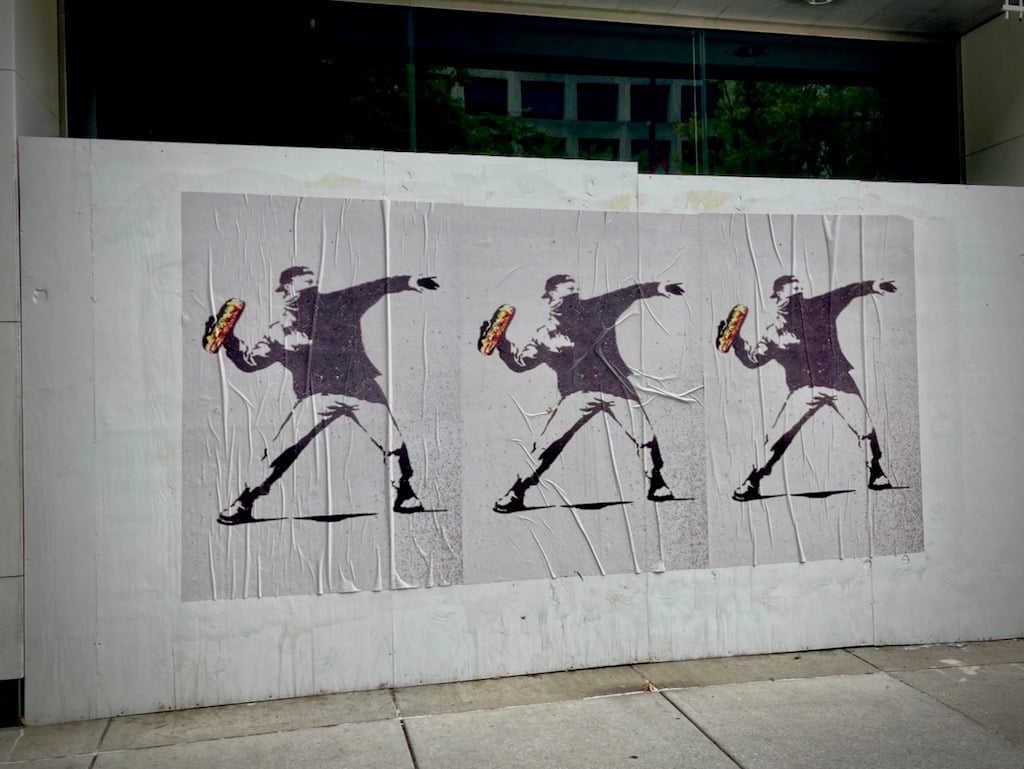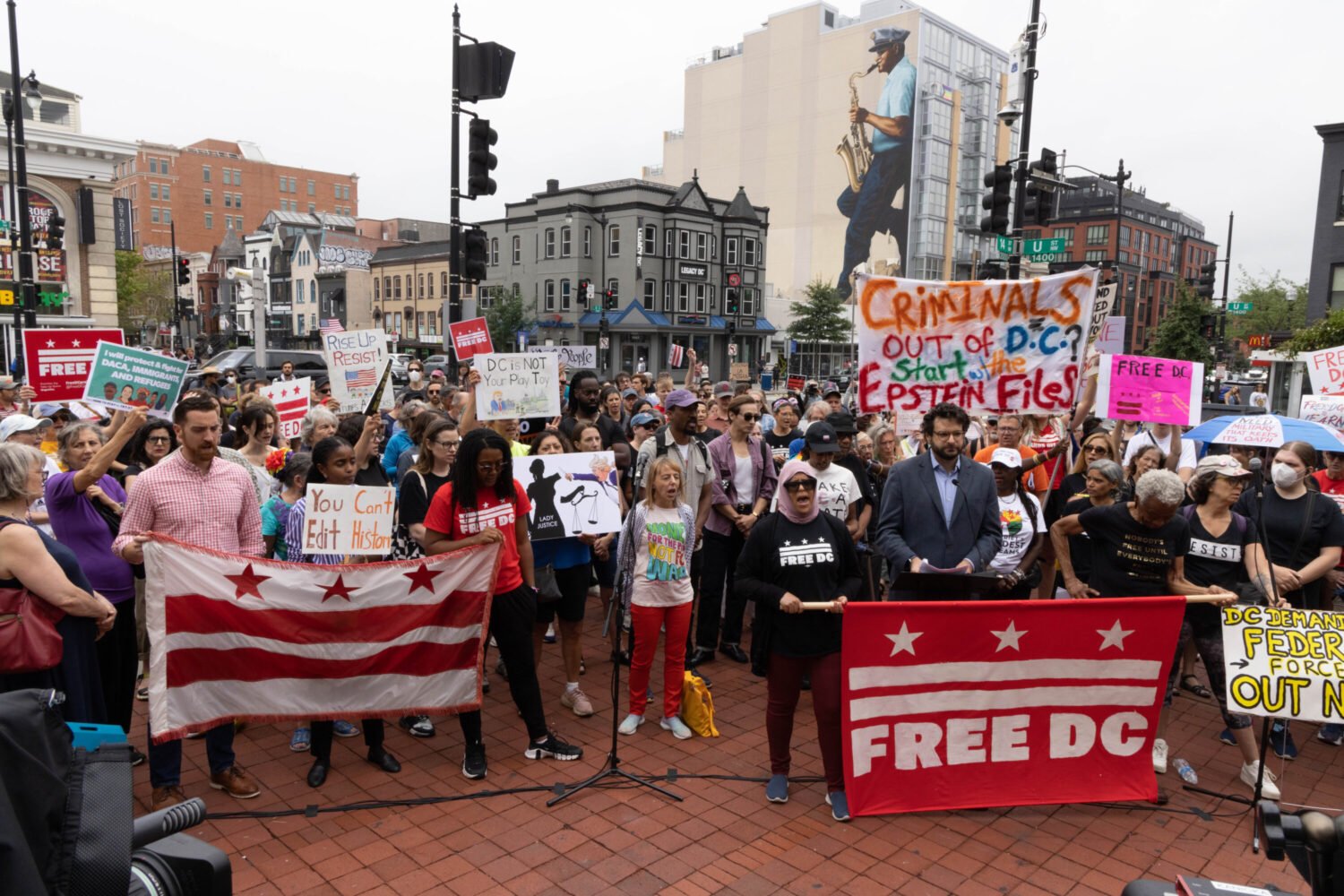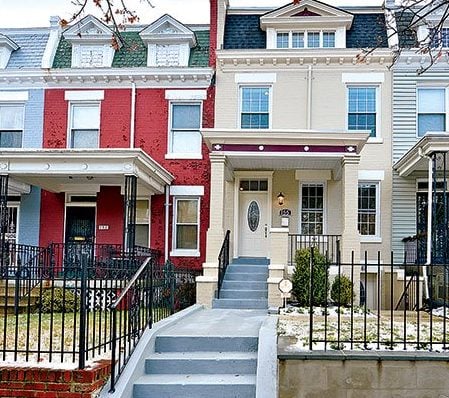The commissioners realized that in deciding how much to pay former owners for each freed slave, they could not simply accept the owners’ valuation. They needed independent help in making those assessments, but because the trade had been outlawed in Washington for a dozen years, they had no way to estimate current market values. Thus they looked to Baltimore, where the business was still legal. As an outside expert, they brought in a Baltimore dealer named B.M. Campbell.
Then, with Georgetown lawyer William R. Woodward as clerk, they went to work at City Hall. (The old City Hall, the oldest municipal building in the District, still stands today at Fourth and E streets, Northwest, on Judiciary Square; it is now a courthouse annex.)
Under the law, former slave owners had three months from the day Lincoln signed the act to present their claims and prove their loyalty to the Union. (In July, Congress approved an extension.) The records of those claims recall the cold, hard business of judging human beings in dollar terms as well as familial bonds between many an owner and slave reaching back over generations.
Altogether, 966 claims were submitted for 3,100 slaves. Some were from elderly widows who were losing the single household servant they depended on. Others were from wealthy planters; the city line then ran along today’s Florida Avenue, and except for Georgetown and a sprawling military camp at Tenallytown (now Tenleytown), most of the rest of the District was farm and woodland.
The longest list was submitted by George Washington Young. On the morning after the President signed the law, Young had ridden out to his Giesboro plantation near the southeastern tip of the District and told his 69 slaves they were now free. It was an emotional scene; his friend John Carroll Brent, who rode with him, wrote:
“This sudden and radical revolution . . . is productive of more consequences than mere pecuniary loss & convenience. For the severing, so abruptly, of ties like these is accompanied in a case like this with pain & distress on the part of the humane & religious owner, which no language can describe.”
Just how the men, women, and children who had worked the plantation felt that day is not recorded.
Seventy-nine-year-old John Harry filed a claim for 27 freed slaves, including Grace Butler, “about 58 years, black, strong frame, complains of rheumatism,” whom he valued at only $100. For Grace’s two daughters and one son, he asked $600 to $800 each. He noted that “Grace was presented to me by Mrs. Martha Clagett of Georgetown DC, the mother of my first wife, when she, Grace, was a small girl and resided in my family until three or four years since, her three children above named were born in my house.”
After describing his former slaves, Harry estimated their total value at $16,100, an average of $575, and added a note about a few. He said that Lydia Meredith, “aged about 43 years, mulatto slave in good health,” and her family “are among the most respectable and moral of their class.” Perhaps he meant this endorsement as a recommendation to potential employers.
Six days a week, the commission worked through claims. Although the valuations by the Baltimore dealer often exceeded those asked by the owners, the eventual total had to fall within the $1 million allotted by Congress. Arriving at those figures finally came down to simple arithmetic, but confirming the loyalty of owners could involve witnesses pro and con. Some of the few claims that were turned down for disloyalty illustrated the strains that tore many families apart during the war.
Mary Throckmorton, whose son Charles was in the Union army, asked compensation for six slaves. But the commission learned that when the war started, her husband, John, born in Virginia, had crossed the Potomac to join the Confederates. She maintained that because he had departed, she controlled the slaves. The commissioners did not dispute her loyalty, but under District law of the time, a husband retained rights even to property brought to the marriage by his wife, so they turned her down.
Smith Minor, who had lived in Alexandria County, moved to Washington with his seven slaves after his farm was overrun by the war. Witnesses conceded that although he was known as a Union man, disloyal neighbors and relatives had persuaded him to vote for secession in the 1861 Virginia referendum. They said he had acted under threats, such as being “hung by the next day at 10 o’clock,” and afterward had “expressed his profound regret.” The commissioners ruled that such threats might excuse disloyal conduct during peace but not in time of war, so they unanimously denied his claim.
So it proceeded, each request examined. Meanwhile, little notice was given to the other major provision of the new law: the offer to fund “colonization” for ex-slaves who wanted to move abroad. This was an idea long championed by Lincoln, but with few exceptions the city’s African-Americans shrugged it off, pointing out that their families had been in America longer than most of the politicians who urged it on them.
What happened that spring and summer in Washington cleared the way in Lincoln’s mind for what followed in the fall–his announcement of the Emancipation Proclamation, to take effect January 1, 1863. Although it applied only to territory held by Confederates, by issuing it Lincoln committed the war and the nation to human liberty, and even Charles Sumner admitted he was happy about it.
This article appears in the April 2012 issue of The Washingtonian.

